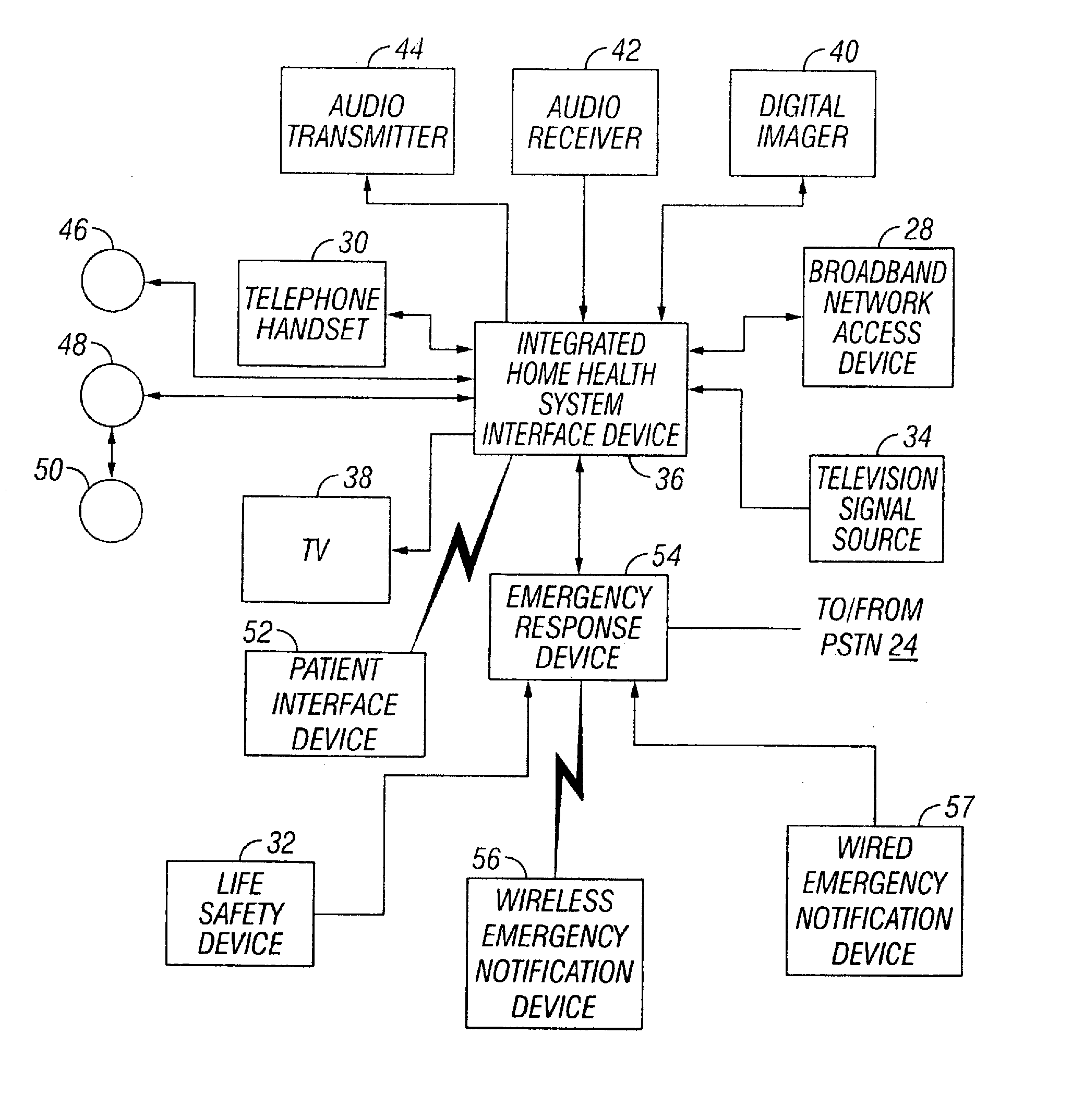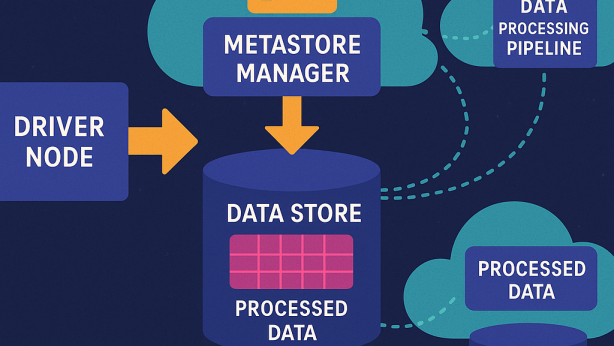Invention for Interface device for an integrated TV-based broadband home healthcare system

Invented by Surendra N. Naidoo, Michael G. McCown, Comcast Cable Communications LLC
An integrated TV-based broadband home healthcare system is a comprehensive healthcare solution that combines various healthcare services, such as remote monitoring, teleconsultation, and health education, into one platform. This system is designed to provide patients with easy access to healthcare services from the comfort of their own homes, reducing the need for hospital visits and improving patient outcomes.
Interface devices are an essential component of this system, as they provide patients with a user-friendly and intuitive way to interact with the healthcare platform. These devices can take the form of remote controls, touchscreens, or voice-activated assistants, and are designed to be easy to use for patients of all ages and technical abilities.
The market for interface devices for an integrated TV-based broadband home healthcare system is expected to grow significantly in the coming years, driven by factors such as the aging population, the increasing prevalence of chronic diseases, and the growing demand for remote healthcare services. According to a report by MarketsandMarkets, the global market for telehealth devices is expected to reach $12.1 billion by 2021, with interface devices accounting for a significant portion of this market.
One of the key drivers of this market is the increasing adoption of telemedicine and remote healthcare services by healthcare providers and patients alike. Telemedicine allows healthcare providers to remotely monitor patients’ health status, provide virtual consultations, and deliver personalized health education, all from the comfort of the patient’s home. This not only improves patient outcomes but also reduces healthcare costs by reducing the need for hospital visits and readmissions.
Another factor driving the market for interface devices is the increasing availability of broadband internet and smart TVs. With the widespread availability of high-speed internet and smart TVs, patients can easily access healthcare services from their living rooms, making it easier than ever before to receive remote healthcare services.
In conclusion, the market for interface devices for an integrated TV-based broadband home healthcare system is a rapidly growing market that is expected to continue to grow in the coming years. With the increasing demand for remote healthcare services, the need for user-friendly and accessible interface devices has become more important than ever before. As healthcare providers and patients continue to adopt telemedicine and remote healthcare services, the market for interface devices is expected to grow significantly, providing patients with easy access to high-quality healthcare services from the comfort of their own homes.

The Comcast Cable Communications LLC invention works as follows
A system for integrated home healthcare includes a television-based station for the patient. It also includes a first provider for telemedicine and other healthcare services, a second for caregiver services, a third for emergency response services, as well as a system manager station connected by a network. The system management station can perform various management tasks on behalf of an integrated home healthcare system. It is also configured to provide home health services for the patient at the patient station. This may be done alone or with the help of one or more first, second, and/or third providers stations.

Background for Interface device for an integrated TV-based broadband home healthcare system
About 100 million Americans suffer from chronic conditions such as diabetes, heart disease, AIDS, or cancer. Around 8 million of these people receive at least one visit to their home per year, while about 3 million need 50 visits. Many people, especially the elderly, those at risk of medical problems, and those with physical disabilities, also subscribe to personal emergency services (?emergency responses?) To ensure that emergency assistance is available quickly and easily, many people subscribe to personal emergency response services (?emergency response?) The cost of emergency response and home healthcare services is currently around 43 billion dollars. The baby boomer generation will continue to age and the need for home healthcare services or emergency response services should increase. Recent projections estimate that the home health care and emergency response market is expected to grow by over 64 billion dollars in 2006.
The extent of implementation of remote healthcare systems varies greatly depending on the type. Remote caregiving systems are an example of a remote healthcare system that has rarely or never been implemented. Telemedicine is one of the most widely used remote healthcare delivery methods. Telemedicine uses electronic communication and information technology to provide healthcare if distance separates a medical professional from a patient. Telehealth is a type of remote health care delivery system. Telehealth is the electronic delivery of health information and care services to benefit patients and their family members. Telemedicine includes not only the actual interactions between a physician and patient, but also education and information designed to raise awareness about medical conditions and treatments and promote good health. The two terms are sometimes used interchangeably but the concept behind telemedicine is the use of technology in order to provide clinical medical care when the patient and healthcare provider are geographically separated. Telehealth is an extension of telemedicine. Telehealth includes not only clinical but also nonclinical services, such as research, education, and administrative functions.
It is clear that many people and their families will benefit from a system of home health that integrates telemedicine, remote caregiving, emergency response, and life safety services into a single integrated system. It is also important to note that it would be desirable if a single device could provide a variety of combinations of these services. This invention is therefore intended to provide a home health system integrated interface device that can achieve various of the benefits mentioned above.
The present invention, in one embodiment, is directed towards an interface device that allows a television-based session between a remote station and a patient’s station to be conducted. The interface device has a first input for receiving the television broadcast from a TV signal source, and an input/output line (?I/O?) The interface device includes a first input line for receiving a television broadcast signal from a television signal source and an input/output (?I/O?) The input device passes the TV broadcast signal on the first input, but it will stop the transmission of the broadcast to the television in order to receive an input data stream from the remote-located station of the home healthcare system.
In one embodiment, the interface device includes at least one extra input line to receive digital data from electronic devices. The digital data received via the additional input lines is then transmitted to the remote station. In a different aspect, the digital data received is audio and/or video data. In other cases, the patient station may be equipped with an audio receiver, a digital imaging device, and/or medical devices. The audio and video data from the digital imager and audio receiver, respectively, as well as medical data from the medical device, are sent to the remote station of the home healthcare system. The remotely located station can be either a healthcare provider, caregiver, or emergency response station. The input data stream for a home health system that is remotely located is audio and video data from a healthcare professional at the healthcare provider’s station. This data is used to conduct a session. The input data stream for a home health system’s remotely located caregiver provider station is audio and video data originating from the caregiver station. This data is used to conduct a remote caregiving sessions. If the remote station is an emergency provider station, then the input data stream consists of audio and visual data from the monitoring personnel at the emergency provider station.
In a second embodiment, the invention relates to a device that interfaces a television at a patient’s station with a provider located remotely of a home healthcare system. The device includes an audio/video controller for bi-directional audio and video data exchanges between the patient station, and the provider station located remotely. It also contains an RF modulator with a first input connected to a TV signal source, and a secondary input connected to the audio/video coordinator. The audio/video manager transfers the audio and video data it receives from the provider station located remotely to the RF modulator. Normaly, the RF moderator sends a television broadcast received from the source of the signal to the TV set. The RF modulator, however, passes audio and video information received from an audio/video management to the television in place of the original television broadcast received from a television source. The RF modulator, in one aspect of this technology, constructs a secondary television broadcast from the audio/video data received from audio/video manager. It then passes the second TV broadcast to the television source instead of the first broadcast.
The audio and video data of the remote provider station can be used to conduct two-way audio/video sessions between a healthcare professional located at the healthcare provider station and the patient. The remote provider session may be either a healthcare provider and use audio and video to conduct two-way audio/video sessions between a health professional at the healthcare provider and patient, or it may be caregiver provider and use audio and videos to conduct two-way video/audio caregiver sessions between a caregiver at the caregiver provider and patient.
In a further aspect of this embodiment, the home healthcare system includes a management station located remotely. Audio and video data from the remotely-located management station are used in this aspect to remind the patients of the scheduled audio/video sessions between a remote-located provider and patient, while audio and videos data from the remote-located provider station are used to conduct that scheduled audio/video between the provider and patient. According to various other aspects, audio/video data from the remote management station can be used by the audio/video managers to create a first type reminder message that requires a patient response or a second reminder message without a patient response. The audio/video managers notifies a reminder manager coupled with the audio/video managers whenever they construct a first type of reminder message. The reminder manager will then send a potential notification to the home healthcare system if a patient fails to respond within a certain time frame to a message that requires a response. The home health system may also include a remotely-located emergency response center. This station will receive potential emergency notifications from the reminder manager. Monitoring personnel at the remote emergency response center would then establish a two way audio, video, or audio/video connection with the patient’s station upon receipt of this potential notification.
DESCRIPTION of Drawings
FIG. “FIG.

FIG. “FIG. 1;
FIG. “FIG. 2;
FIG. “FIG. 3;
FIG. “FIG. 1;
FIG. The flowchart in Figure 6 shows a procedure for installing the patient’s station from FIG. The flowchart of FIG.6 shows a method for installing the patient station shown in FIG.2. into the integrated TV-based broadband home healthcare system shown in FIG. 1;
FIG. “FIG. 1 via a television set;
FIG. FIG. 1;
FIG. “FIG. 1; and
FIG. FIG. 1.
Referring to Figure 1. The present invention will be explained in more detail by describing a television-based integrated broadband home health system 10. The integrated television-based home health system 10 comprises a patient 12 station, a first provider station 14 (or healthcare provider), a second provider station 16 (or caregiver), a third provider station 18 (or emergency response), and a management station 20. These stations are connected by a data networking 22 such as the Internet or interactive television network. Each of the first two and three provider stations, 14, 16 and 18, are configured to offer various home health services for a patient at the patient station 12, as will be described in more detail below. The system management station 20, in addition to performing management functions on behalf of integrated television-based home health system 10, is configured to provide home health services for a patient at the patient station 12. This can be done either by itself or in conjunction with the first, second, and/or third providers stations 14, 16, and 18.

As described herein, each of the four stations (the first provider station 14, second provider station 16 and third provider station 18, as well as the system management station 20, are remotely located with respect to the patient station 12. The first provider station 14, second provider station 16 and third provider 18 are also remotely located. It is also fully envisaged that the integrated TV-based broadband home healthcare system 10 can be configured so that the various home health services that are provided by the different provider stations 14, 16, 18, and 20 may be instead provided by one common provider station. The integrated television-based home health system 10 can be configured with additional system management and/or provider stations. This additional system management and/or provider station may be used for providing additional home healthcare services to a patients located at patient station 12, and/or to manage the integrated television-based home health system 10. In addition, it is contemplated that these additional provider and/or systems management stations can be used to provide back-up home health services to patients located at the patient’s station 12, and/or to manage the integrated television based broadband home healthcare system 10 if one or more out of the four provider stations 16, 18, and 20 fail. It should be understood, in any case, that the configuration disclosed of the integrated TV-based broadband home healthcare system 10 is only exemplary. Numerous variations are possible within the scope and spirit of the invention.

Click here to view the patent on Google Patents.


